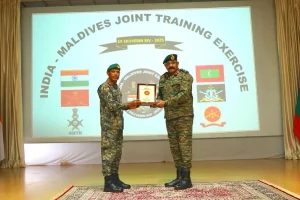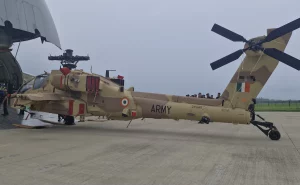The Air Force Common Admission Test (AFCAT) is one of the most prestigious exams for individuals aspiring to join the Indian Air Force (IAF) as commissioned officers. To crack this highly competitive exam, candidates need to excel in various sections, including Static General Knowledge (GK). A strong command of Static GK is crucial, especially for those aiming to join the defense forces, as it forms the foundation of national and international affairs. In this article, we will focus on an essential aspect of Static GK: Important Straits and International Borders that are vital for defense aspirants appearing in the AFCAT 1 2024 exam.
Understanding the Significance
Static GK holds immense importance in the AFCAT exam, as it helps candidates stay updated about global affairs and geography. For defense aspirants, knowledge about critical geographical locations, straits, and international borders is indispensable, as it aids in strategic planning, navigation, and decision-making during missions and operations.
Important Straits for Defence Aspirants
- Strait of Hormuz: Located between Oman and Iran, the Strait of Hormuz is a critical waterway connecting the Persian Gulf to the Gulf of Oman and the Arabian Sea. It is of strategic importance due to its role in the transportation of oil and the potential for geopolitical conflicts in the region.
- Strait of Malacca: Situated between the Malay Peninsula and the Indonesian island of Sumatra, the Strait of Malacca is one of the busiest waterways globally. It is a crucial chokepoint for international trade, making it vital for defense and maritime security considerations.
- Bab-el-Mandeb: This strait separates the Arabian Peninsula from the Horn of Africa, connecting the Red Sea to the Gulf of Aden. Its significance lies in its proximity to conflict-prone regions, making it essential for safeguarding maritime interests.
- Bering Strait: Located between Russia and the United States, the Bering Strait connects the East Siberian Sea to the Chukchi Sea. Although not as critical for India’s defense, it is essential for a global perspective, given its role in the Arctic region’s geopolitics.
International Borders of Strategic Importance
- Line of Actual Control (LAC): The LAC separates India and China and has been a significant area of contention. Aspiring defense personnel should have an in-depth understanding of this border, as it plays a crucial role in India’s national security strategy.
- Line of Control (LoC): The LoC separates India and Pakistan in the region of Jammu and Kashmir. It is a critical international border, often marred by tensions and hostilities, making it essential for AFCAT aspirants.
- Durand Line: The border between Afghanistan and Pakistan, known as the Durand Line, is historically significant and remains a subject of diplomatic dispute. It is essential for defense aspirants to have a basic understanding of this border’s context and its geopolitical implications.
- McMahon Line: This border separates India and China in the eastern Himalayas and is crucial for understanding the complexities of the India-China relationship. It is of utmost importance for candidates aspiring to serve in the defense sector.
Conclusion
In the pursuit of a career in the defense forces, aspirants must possess a solid grasp of Static GK, including knowledge about important straits and international borders. Such information is not only relevant for the AFCAT exam but also critical for military personnel in planning and executing strategic operations. By mastering these aspects of Static GK, candidates can enhance their readiness and competence as potential leaders in the Indian Air Force and contribute to the security and well-being of the nation. Stay committed to your preparations, stay updated, and let your dedication lead you to success in the AFCAT 1 2024 exam. Good luck!



















